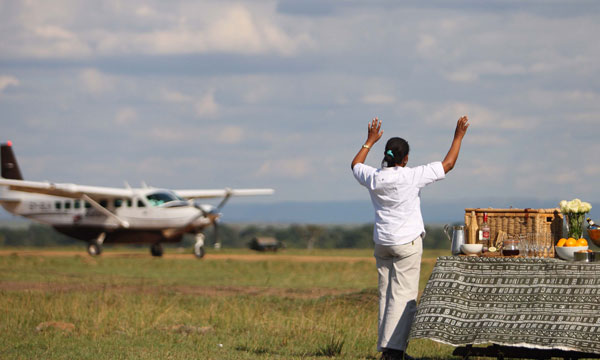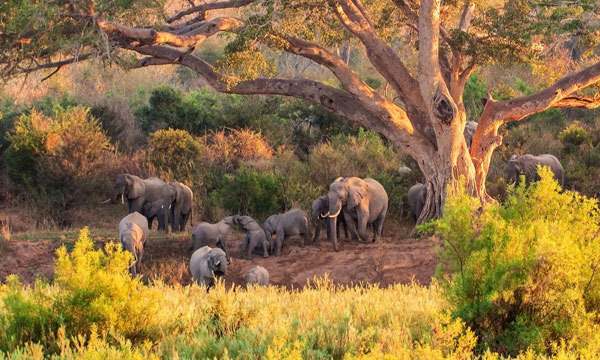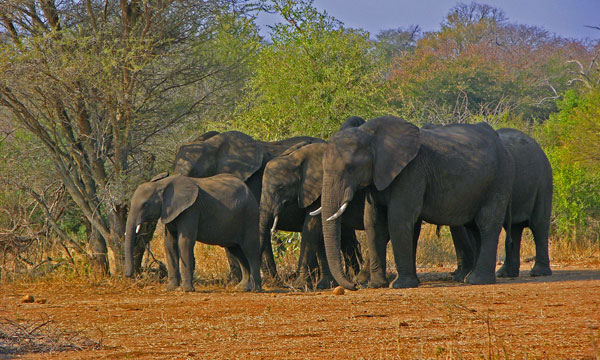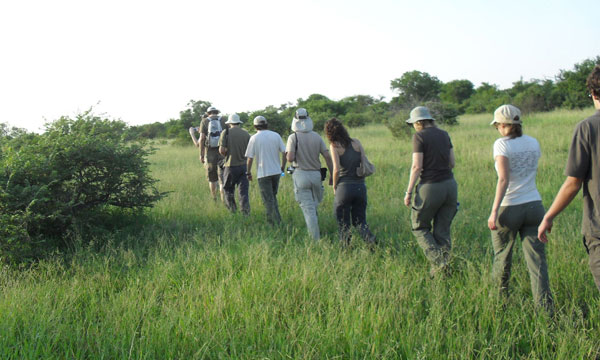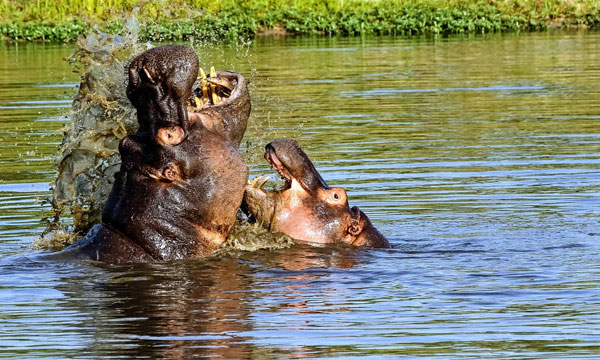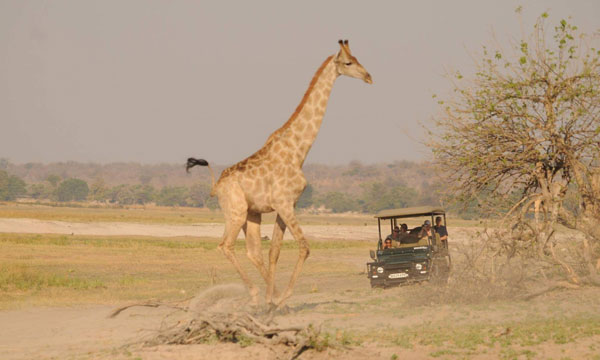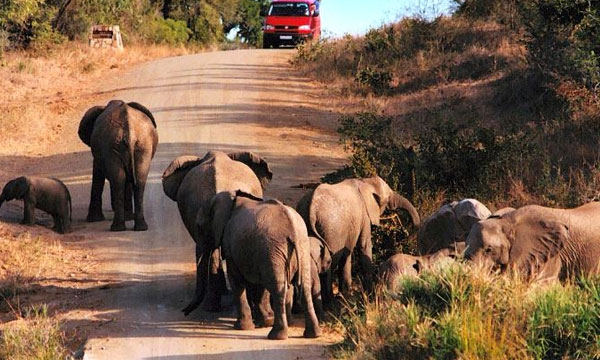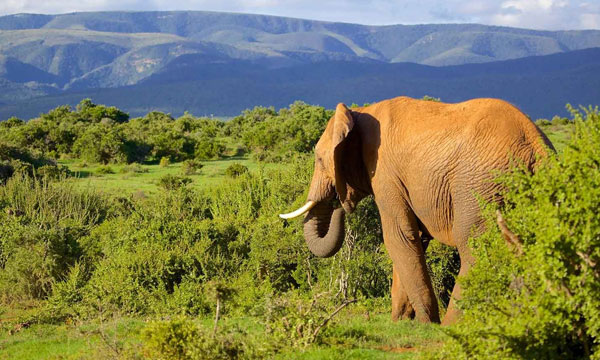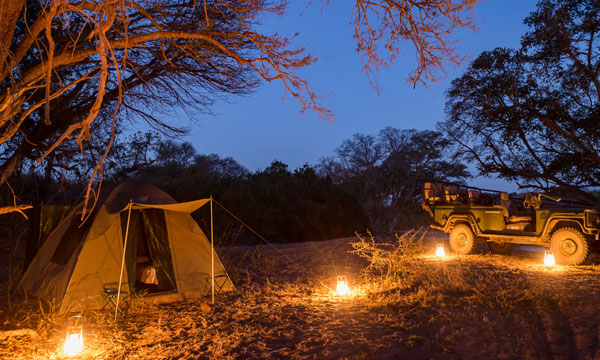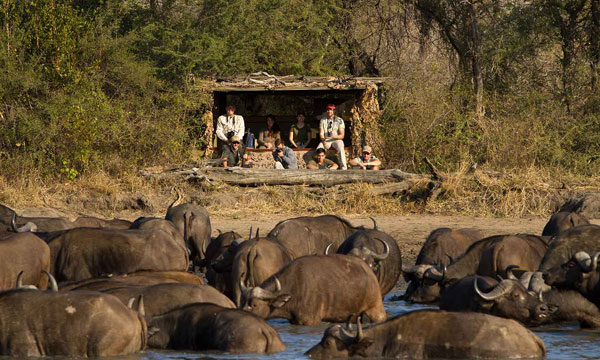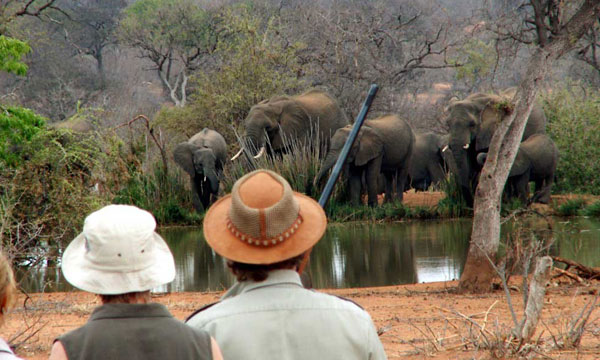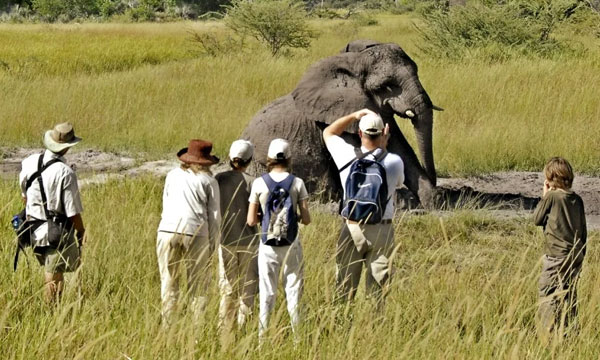Call Us
8:00am - 17:00PM
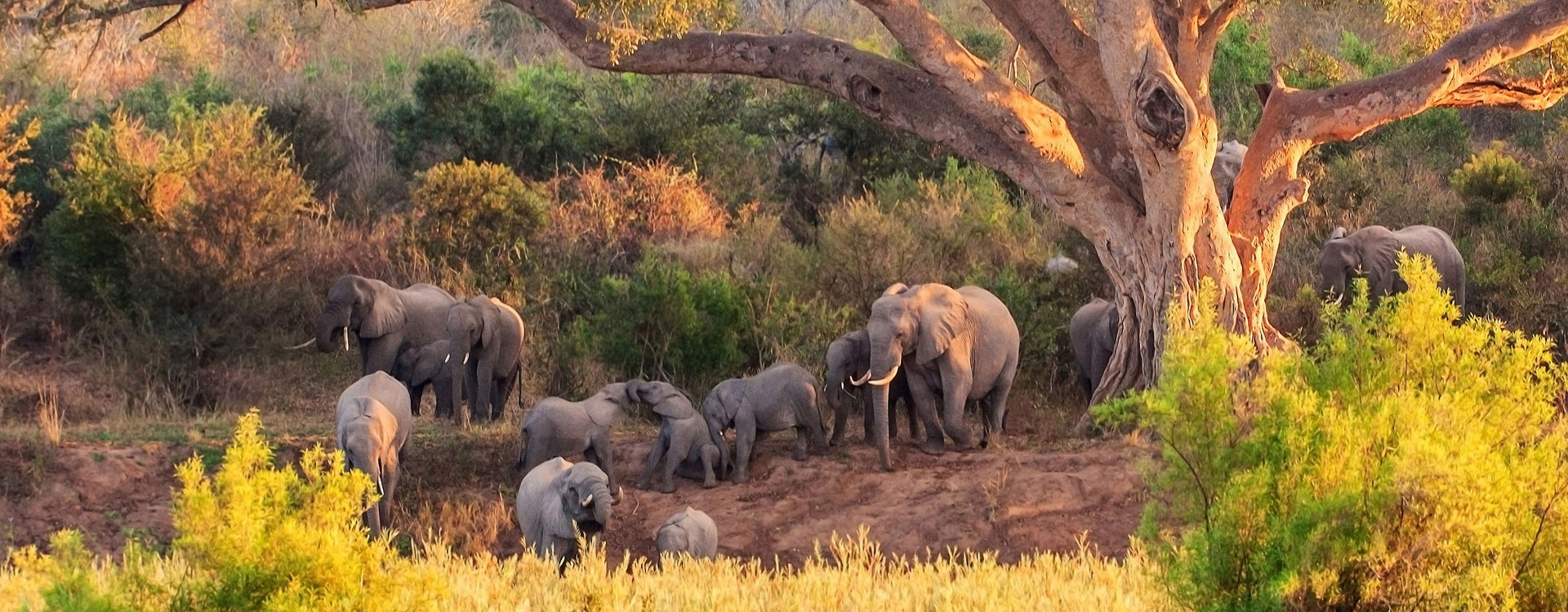
Kruger National Park
About Kruger National Park
Being the flagship national park of South Africa, Kruger is synonymous with the world of African Safari. Being home to an unrivalled diversity of life forms that perfectly combines with rich cultural heritage and archaeological wonders-Kruger National Park represents real Africa in its truest form and nature.
The Kruger National Park is an exhilarating South African destination that ensures spectacular encounters with wildlife amidst its vast and stunning landscapes. On an exhilarating Kruger National Park Safari, you will spot the iconic and legendary African Big Five: Elephant, Rhino, Lion, Leopard, and Buffalo.
Also, besides wearing the badge for being the largest game reserve in South Africa, the park boasts of hosting a remarkable number of natural wonders. These include 500 bird species, 100 reptiles, close to 150 mammal species, captivating archaeological sites, and a rich variety of trees and flowers. A South Africa Safari is incomplete without visiting its crown jewel-Kruger National Park.
Kruger National Park Tours & Safaris
We Think You’ll Love
Best time to visit
As a year-round safari destination, the Best Time to Visit Kruger National Park depends on personal preferences and priorities. The dry winter months from May to September are considered the peak season and are optimal for game-viewing as the animals are easier to spot near watering holes, and the weather is mild. However, the park is also busier during this time, and prices may be higher. The rainy summer months from November to March offer lush scenery, new-born animals, full waterholes, and fewer crowds, but the thick vegetation may make it more difficult to spot wildlife.
Wildlife
Kruger National Park is South Africa's largest conservation area, home to the Big Five, large carnivores, and the largest populations of game species like rhinos, buffalo, and elephants. The vegetation types differ across the park, resulting in varying wildlife species. The different regions of the park offer visitors the chance to see a variety of species, including Roan Antelope, Tsessebe, Common Eland, Savanna Elephant, Plains Zebra, Impala, and Southern Giraffe. Bird-watching is popular throughout the park, with a higher number of species found here than anywhere else in South Africa, including Martial Eagles and Kori Bustards. Visitors can also spot crocodiles, snakes, and primates.
What To Experience
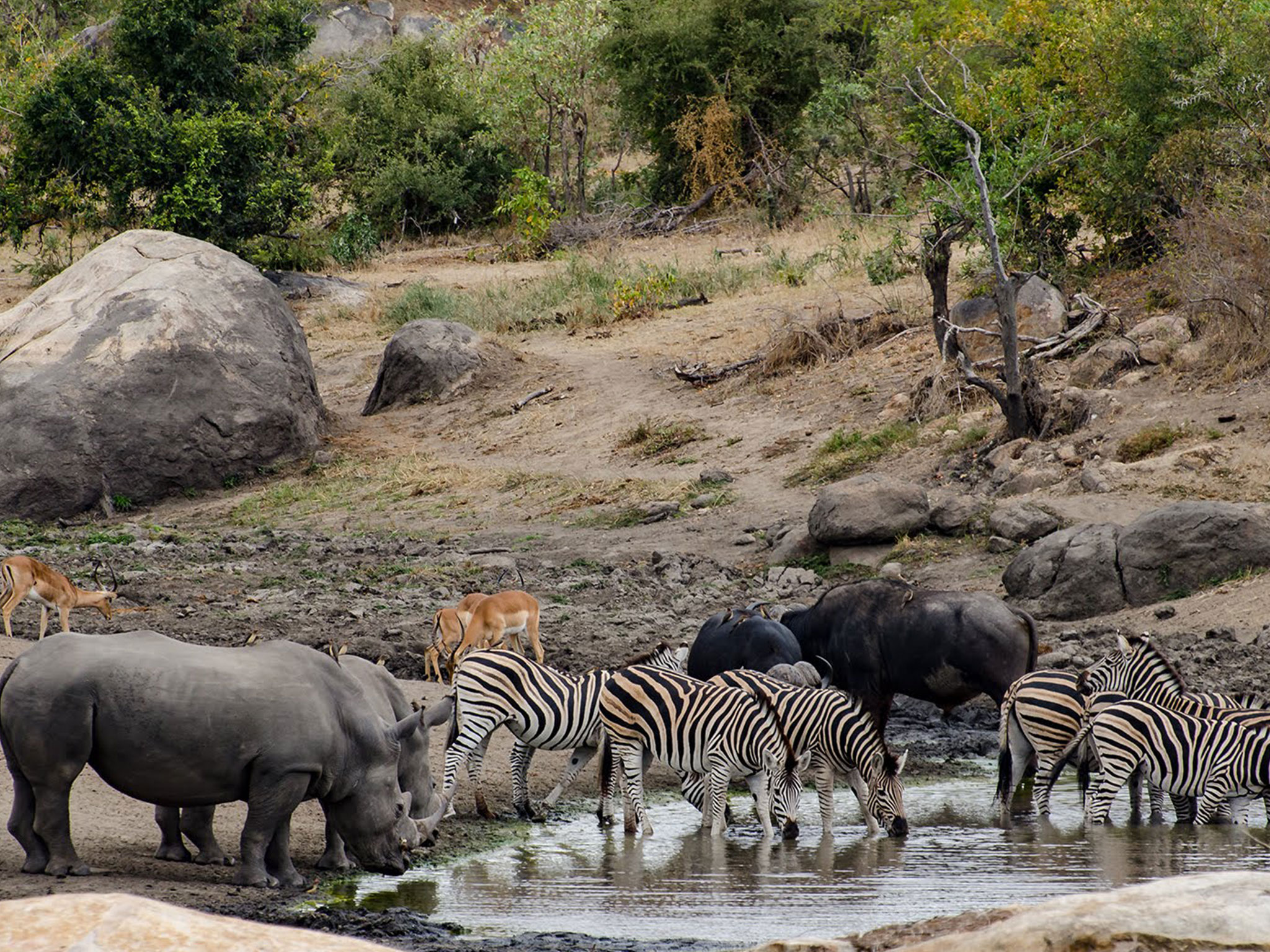
Game drives at Phalaborwa Gate in Kruger National Park
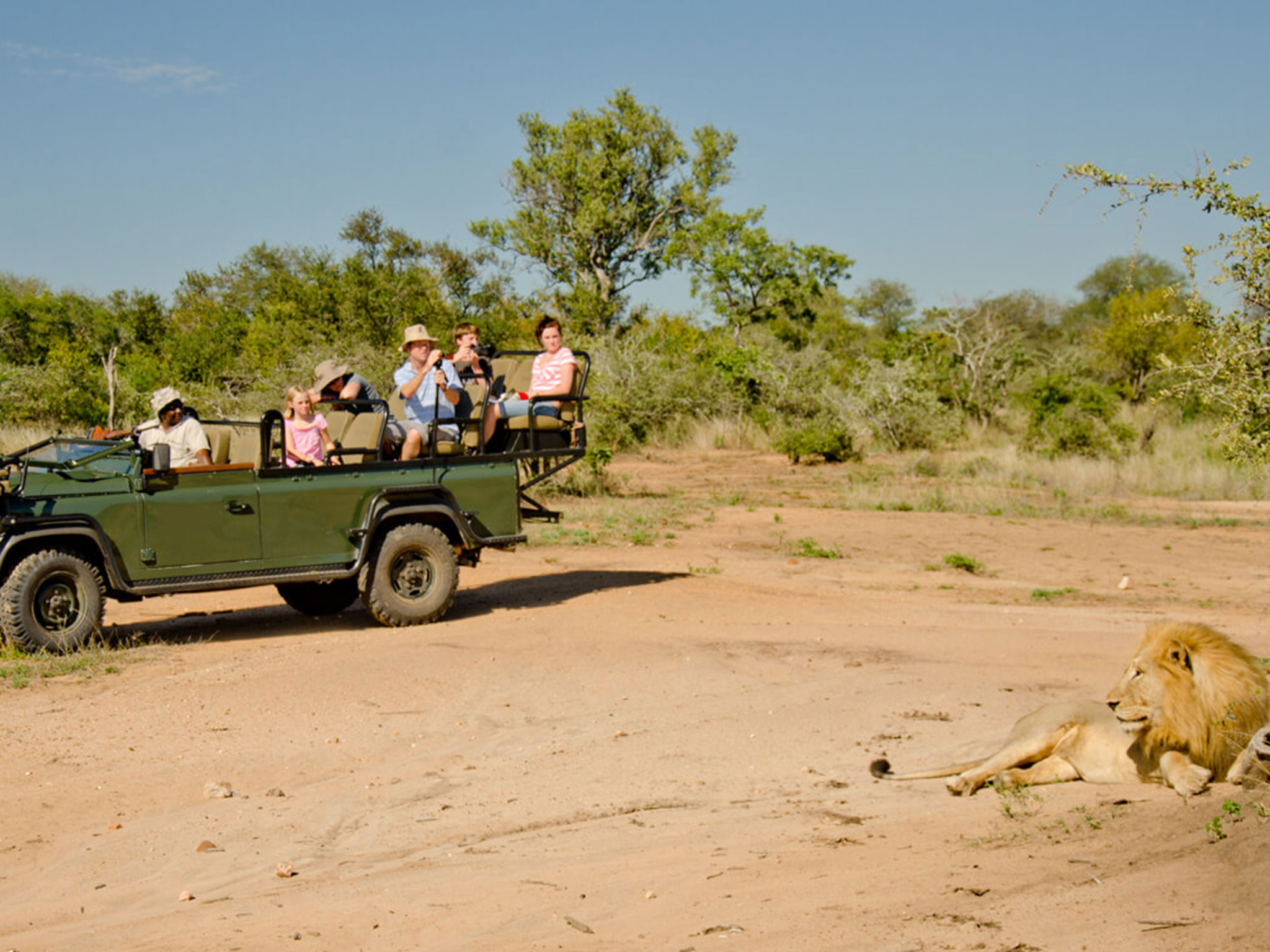
Inn Africa Tours & Safaris
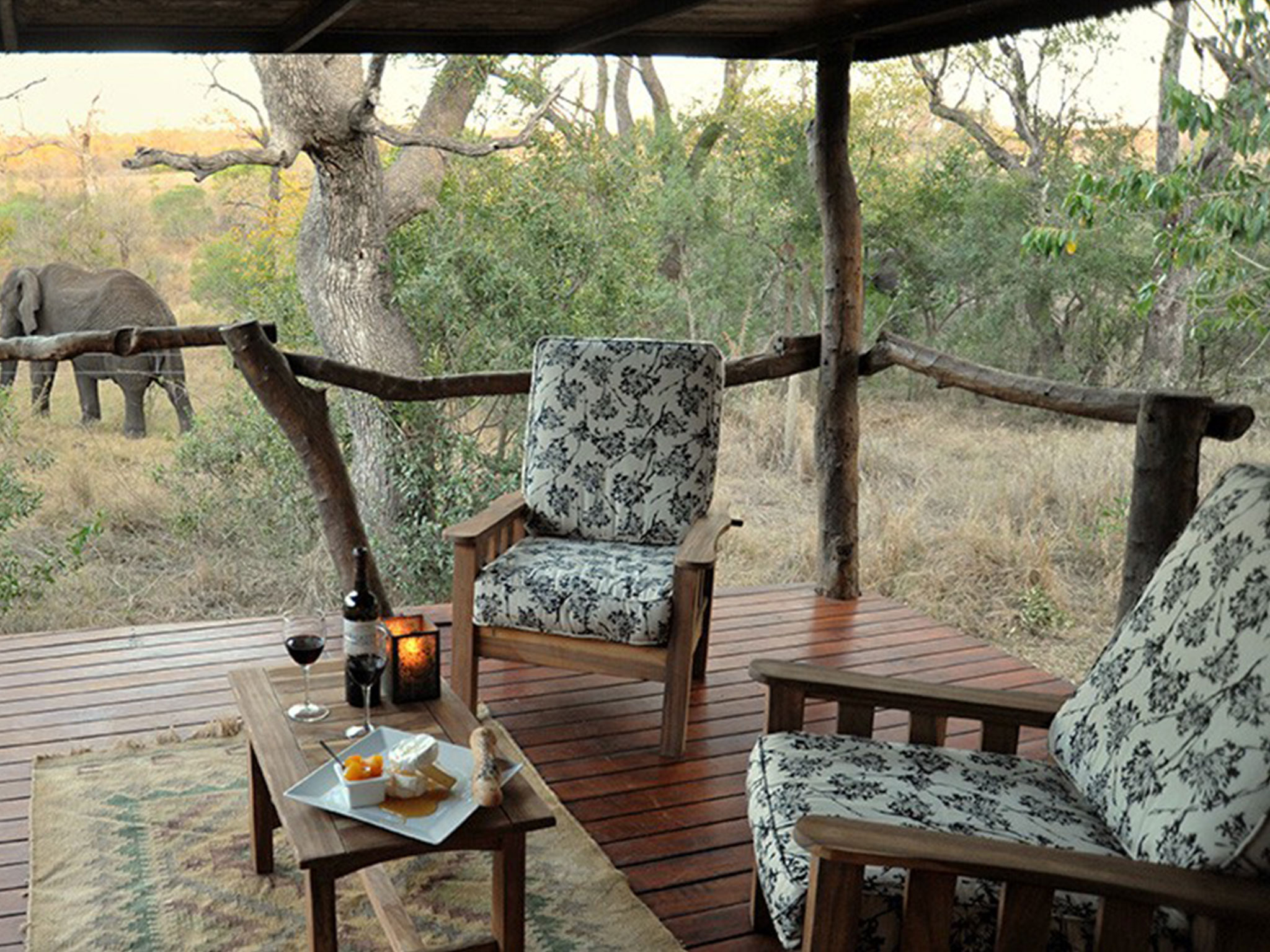
Idube Game Reserve
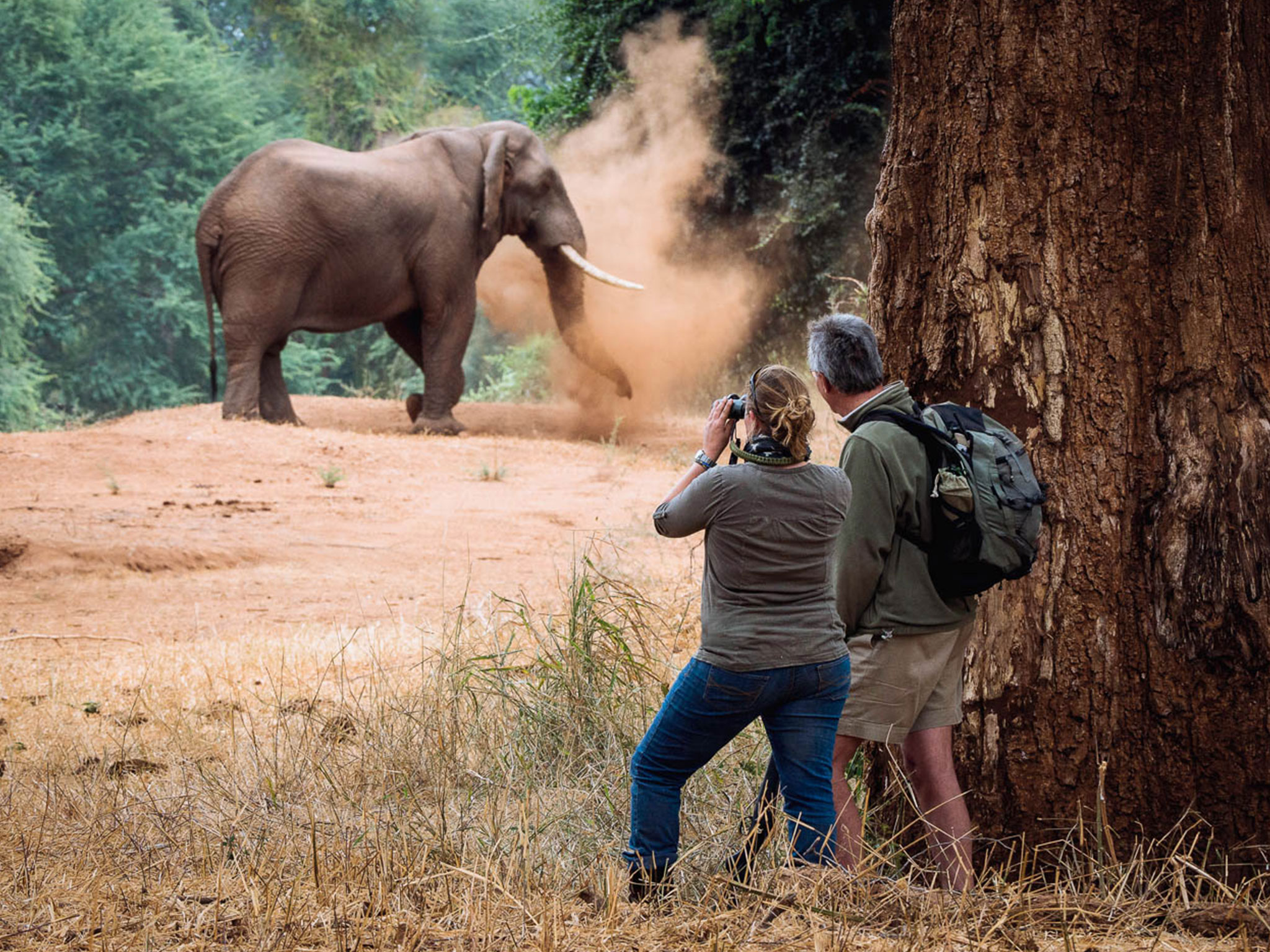
Wolhuter Wilderness Trail
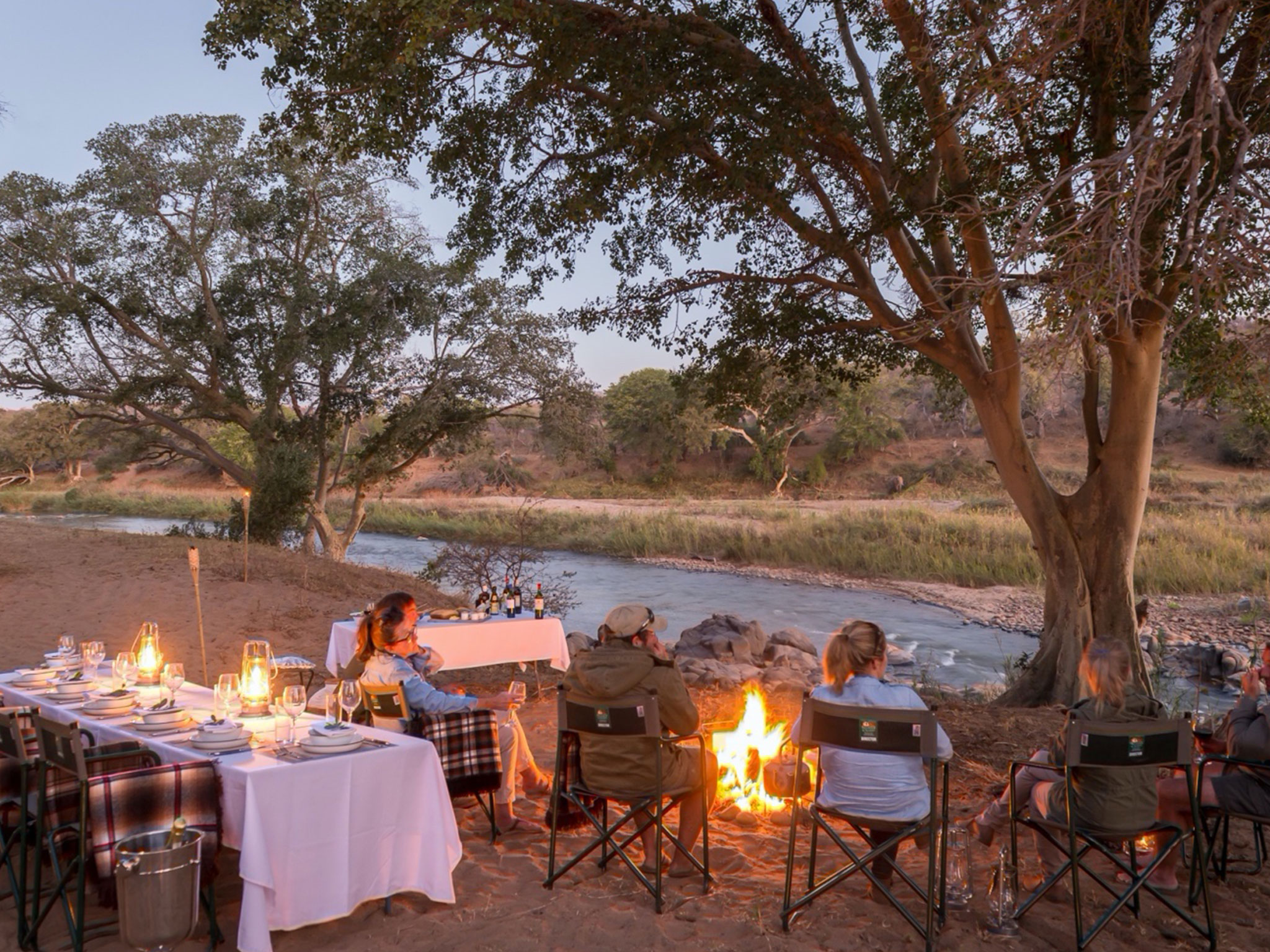
Olifants Wilderness Trail
Travel Guide For Kruger National Park
We Think You’ll Love
History And Background Of Kruger National Park
South Africa's most iconic national park, Kruger, is enriched with an interesting history spanning over a century. The park was established in 1898 by the South African Republic government to protect the region's dwindling wildlife populations.
It was originally known as the Sabie Game Reserve and covered an area of approximately 2,000 square kilometres. In 1926, the park was officially named Kruger National Park in honour of Paul Kruger, the former President of the South African Republic.
By this time, the park had expanded significantly and encompassed an area of approximately 8,000 square kilometres. Over the years, Kruger National Park has played a significant role in South Africa's political and economic history.
During the apartheid era, the park was divided into two sections: one for white visitors and one for black visitors. It wasn't until the 1990s that the park was integrated and opened to all visitors, regardless of race.
In recent years, Kruger National Park has become one of the Major Tourist Attractions in South Africa, drawing visitors from around the world to experience its incredible wildlife and natural beauty.
The park has also played a vital role in South Africa's economy, providing jobs and income to local communities through tourism and conservation initiatives.
Today, Kruger National Park is one of the largest game reserves in Africa, covering an area of approximately 19,485 square kilometres. It remains a crucial conservation area, dedicated to preserving the region's wildlife and ecosystems for generations to come.
Table: Timeline of Kruger National Park's History
|
Year |
Event |
|
1898 |
Sabi Game Reserve established |
|
1902 |
First Park warden appointed-James Stevenson Hamilton |
|
1926 |
The National Parks Act was proclaimed and with it, the Sabie and Shingwedzi Game Reserve merged into the Kruger National Park. |
|
1949 |
Park management transferred from a private company |
|
1950s |
Construction of camps and facilities for tourists |
|
1990s |
Kruger National Park integrated and opened to all |
|
2000s |
Anti-poaching and conservation initiatives launched |
Kruger National Park Map, Location And Size
Situated in the northeastern corner of South Africa, the Kruger National Park spans over 19485 km2 and extends 350 kilometres (217 miles) long and 60 kilometres wide from east to west. This makes Kruger one of the largest game reserves in Africa, comparable in size to Israel or Wales.
The national park spreads across two of South Africa’s provinces, namely Limpopo and Mpumalanga. While the eastern boundary of the reserve is shared by the Mozambique border, the northern border is formed by the boundary of South Africa, Zimbabwe, and the Limpopo River.
Below is a detailed Kruger National Park Map that gives information about all the key features of the park such as the main camps, other camps, main roads, gravel roads, get-out points, gates, and petrol station. This handy map will be your companion for Kruger National Park Tours.
Kruger National Park Topography And Ecosystems
The park's diverse landscapes range from vast savannahs and dense riverine forests to rocky outcrops and mopane woodlands. These varying ecosystems support a wide array of plant and animal species, contributing to Kruger's remarkable biodiversity.
Five major rivers traverse Kruger National Park, providing essential water sources for the park's flora and fauna. These rivers are the Crocodile, Sabie, Letaba, Luvuvhu, and Olifants, each carving out their unique ecosystems along their courses. Riverine areas are particularly rich in biodiversity, attracting a high density of wildlife seeking water and lush vegetation.
The different ecosystems within Kruger National Park are crucial for sustaining its diverse wildlife populations. For example, the acacia-dotted savannahs are ideal habitats for herbivores such as giraffes and impalas, while dense riverine forests offer shelter and hunting grounds for predators like lions and leopards.
According to the varying vegetation and climatic conditions, the Kruger National Park ecosystem comprises 5 zones. The table below represents the 5 zones in the Kruger, and their characteristics such as the location, and dominant vegetation.
|
Ecosystem Zone |
Description |
Dominant Vegetation |
|
Zone 1 |
|
Mopane Tree |
|
Zone 2 |
|
Acacia thorn trees |
|
Zone 3 |
|
Red bushwillow tree and Combretum Apiculatum. |
|
Zone 4 |
|
Acacias, combretums, Sycamore, figs, Mkuhulu, and spectacular flowering trees. |
|
Zone 5 |
|
The tropical riverine forest consists of huge wild figs, spectral fever trees, ebony, mahogany, wild seringa, and many baobabs. |
Climate And Best Time To Visit Kruger National Park
Kruger National Park experiences a subtropical climate characterized by hot summers with high rainfall and mild, dry winters. The winters and summers of the park are opposite to those of Europe and North America.
The park's climate can be broadly divided into two seasons:
- The wet season, which runs from October to April experiences a hot and humid climate.
- The dry season, from May to September experiences a warm and mild; considerably cool at night.
WET SEASON OF KRUGER NATIONAL PARK
The climate is hot and humid during the summers. The temperatures peak at 40ºC/104ºF and the average daytime temperatures reach 32º/90ºF. It doesn’t rain the entire day but afternoon thunderstorms are the norm for travellers going on Kruger National Park Tours.
|
Months of Wet Season |
Temperatures |
Description |
|
October and November |
Temperature varies between 18ºC in the morning and 31ºC in the afternoon. |
Warm environment and rains more often. |
|
December, January, and February |
Afternoon temperatures vary between 32ºC and 40ºC. |
hottest and wettest months of Kruger defined by torrential downpours in the afternoon and high humidity. |
|
March and April |
-Daytime temperatures are around 30ºC and night temperature is around 18ºC. |
|
DRY SEASON OF KRUGER NATIONAL PARK
The dry season of Kruger has got no sign of rainfall at all. The entire winter months are dry with very low humidity.
|
Months of Dry Season |
Temperatures |
Description |
|
May |
Temperature is comparatively low with 12ºC in the morning and 27ºC in the afternoon. |
The end of summer and the beginning of the winters-transitional month. |
|
June, July, and August |
Average morning temperature is 10ºC and afternoon temperatures are around 26ºC. |
|
|
September |
It starts getting hotter in the afternoons with a temperature of about 29ºC. Morning temperatures are around 14ºC (less cold as compared to earlier months) |
Heat gradually starts building up and first rains splash across Kruger bringing in relief from the dry conditions. |
Key Tip: Make sure to pack some warm clothing on Kruger National Park Safaris in the dry season particularly. It will keep you warm and protected from the morning chills during game drives.
BEST TIME TO VISIT KRUGER NATIONAL PARK
Overall, the best time to visit Kruger National Park on South Africa Safari depends on your preferences and priorities. If your main goal is optimal wildlife viewing, then the dry season is recommended. However, if you prefer a more verdant landscape and are willing to contend with higher temperatures and rainfall, the wet season may be more appealing. So, choose wisely!
How To Get To Kruger National Park
Flying to Kruger National Park is the most convenient and time-saving option for travellers on South Africa Safari Vacation. Also, there are several airports available that service Kruger National Park.
- The closest international airport is O.R. Tambo International Airport in Johannesburg. Most visitors to Kruger prefer to fly into this airport. From here, you can catch a connecting flight to one of the airports near Kruger National Park or book a direct charter flight to a private game reserve.
- Alternatively, it is also possible to fly directly to Kruger Mpumalanga International Airport (MQP), from Germany. The airport is from a short distance of around 40km/25 miles from the Numbi gate, located in the Southern Kruger which makes it easier to get to the park.
Domestic Flights
After arriving at O.R. Tambo International Airport (JNB), near Johannesburg, you can take a connecting flight to smaller airports near the park. Domestic flight options are available for the following airports:
- Kruger Mpumalanga International Airport
- Hoedspruit Airport (for central and northern Kruger),
- Phalaborwa Airport (for northern Kruger)
Many lodges and Kruger National Park Accommodations within the park offer shuttle services or private transfers from these airports.
Another direct option is to take a scheduled flight to Skukuza Airport (SZK) which is located within Kruger National Park itself.
Several airlines offer daily flights from Johannesburg and Cape Town to Skukuza airport. And, Federal Airlines will fly you from Skukuza to the lodges’ airstrips.
Also, there are charter flight options available for accessing Skukuza or any of the lodge’s airstrips.
Popular airline Carriers offering Scheduled domestic flight options are listed below:
|
Airline Carriers |
Accessing points for Kruger National Park |
|
SA Airlink |
Flies to Skukuza, Mbombela, Hoedspruit, and Phalaborwa |
|
CemAir |
Flies to Hoedspruit |
|
FlySafair |
Flies to Hoedspruit |
|
Federal Airlines |
Flies to airstrips of some lodges within the national park. |
Are Self-Drive Options Available to Get to Kruger National Park?
Yes! Off course. Kruger is a premiere game reserve and offers incredible opportunities for self-drive safaris. You can hire a car after arriving at O.R. Tambo International Airport (JNB) and from here you can just drive straight into the park premises through its Numbi Gate which is 375km/235 miles from the airport and takes around 4 to 5 hours.
Kruger National Park Wildlife
Kruger National Park is world-renowned for its incredible wildlife and is home to a vast array of mammal, bird, reptile, insect, and other invertebrate species. Here are some of the highlights:
BIG FIVE OF KRUGER NATIONAL PARK
The Big Five of Kruger National Park are the lion, leopard, elephant, rhino, and buffalo. These five iconic species are the main drawing card for many tourists travelling to the park from far and wide.
They are considered some of the most difficult and rewarding animals to spot on a game drive. Daily game drives on Kruger National Park Safari give ample opportunities to spot the stars of African wildlife.
ANTELOPES OF KRUGER NATIONAL PARK
Antelopes are a highlight of Kruger National Park Tours. These graceful creatures are present throughout the national park and can be spotted during game drives.
The most common antelopes in Kruger are the Impalas, followed by the Kudus. Rare antelopes such as Sable and Eland can also be spotted if you are lucky enough. You can also look out for two secretive species, Duiker and Steenbok, on your safaris which are otherwise too small to be spotted.
A list of antelopes of Kruger and their habitat in Kruger National Park are listed below:
|
Antelopes |
Best Place to see |
|
Eland |
Common in riverine forest areas, south-western foothills, and woodlands in the Sabie River catchment area. |
|
Eland |
Savanna plains and mixed woodlands |
|
Sable antelopes |
Mixed savanna woodlands, mostly found around Pretoriuskop and western mopane veld near Phalaborwa. |
|
Waterbuck |
Common around Letaba and near water resources. |
|
Impala |
Open savanna grassland and mixed woodlands. |
|
Nyala |
Found along permanent water resources, more common in the north and along the Sabie River. |
|
Bushbuck |
Thorn thickets and dense bushes close to permanent water resources |
|
Tsessebe |
Open sweet veld plains of northern Kruger, north of Letaba and close to Mopani Camp |
|
Lichtenstein’s Hartebeest |
Mainly around watercourses in savanna grassland. |
|
Grey Duiker |
Mixed woodlands throughout Kruger |
|
Steenbok |
Open woodlands, particularly in sand veld around Punda and Pafuri. |
|
Klipspringer |
They are habitat specific and found only in rocky outcrops and bouldered landscapes, in Lembobo and the southwestern foothills. |
PREDATORS AND CARNIVORES OF KRUGER
Apart from the Big Five, the Kruger is widely famed for its large flesh-eating predators and carnivores. The list of Kruger’s big mammal predators includes lions, leopards, cheetahs, hyenas, and wild dogs.
Each of them occupies a different habitat or ecological niche as per their food acquisition needs.
Although scattered throughout the park, their numbers are usually more in the grasslands of central and south-eastern Kruger.
OTHER MAMMALS IN KRUGER NATIONAL PARK:
The list of other mammals that can be found in Kruger National Park includes aardvark, pangolin, aardwolf, African Weasel, mongooses, bushbabies, genets, and many more.
PRIMATES IN KRUGER NATIONAL PARK
Smaller primates of the continent are commonly found in Kruger National Park. They can be mostly located in the trees and mountains. The most common primates in Kruger include baboons, gorillas, bush babies, and vervet monkeys.
Kruger National Park Birdlife
Kruger National Park is a birdwatcher's paradise, boasting over 500 recorded bird species. Roughly, around 60% of birds in South Africa are found only in Kruger. This exclusive list also includes around 50 migratory species.
Kruger is the best place in South Africa to locate the birds of prey. They include 55 diurnal species and 11 nocturnal species.
Some of the most iconic and endemic bird species found in Kruger include the Swainson’s spurfowl, saddle-billed stork, southern ground hornbill, white-fronted bee-eater, martial eagle, and the colourful lilac-breasted roller.
The park is also home to several rare and sought-after species, such as the elusive Pel's fishing owl and the endangered Kori bustard.
Top bird-watching spots in Kruger National Park include the riverine areas along the Sabie, Olifants, and Luvuvhu rivers, as well as the diverse habitats surrounding the various rest camps.
Here are some bird-watching tips for your Kruger visit:
- Start early in the morning, when birds are most active.
- Bring a pair of binoculars and a field guide to help with identification.
- Keep a respectful distance from birds, and avoid disturbing their natural behaviour.
- Join a guided birding walk or tour for expert insights and the best bird-watching locations.
To make the most of your bird-watching experience on Kruger National Park Safaris, consider visiting during the wet season when migratory birds (Eurasian and intra-African migrants) arrive, and the park's birdlife is at its peak.
Kruger National Park Safari Experiences
Kruger National Park offers an exciting array of activities that visitors to the park can take part in, allowing them to grow up close and personal with nature. Participants can be rest assured about their safety as all these activities will be carried out under the guidance of experienced, and professional guides. Let’s take you through some popular Kruger National Park Activities.
Guided game drives
Guided game drives are a popular way to explore Kruger National Park's diverse landscapes and wildlife.
Experienced guides share their knowledge of the park's flora and fauna, track animals, and offer insight into animal behaviour.
Night game drives are also available on Kruger National Park Safari, providing a unique opportunity to observe nocturnal animals and experience the park's atmosphere after dark.
To maximize wildlife sightings, be patient, stay quiet, and follow your guide's advice.
Walking safaris
Walking safaris offer an immersive and intimate way to experience the park's ecosystems.
Led by knowledgeable guides, these safaris allow you to observe smaller flora and fauna often missed during game drives.
Popular walking safari routes include the Bushman Trail, Wolhuter Wilderness Trail, and Olifants River Backpack Trail.
Always follow safety guidelines and pay attention to your guide's instructions to ensure a safe and enjoyable experience.
Guided bush walks
Bush walks provide unique opportunities to encounter nocturnal wildlife, such as bushbabies, porcupines, and leopards.
These activities can be booked through your accommodation or local tour operators.
Prepare for your adventure by wearing appropriate clothing, carrying a flashlight, and following all safety guidelines.
Photographic safaris and workshops
Photographic safaris cater specifically to photographers looking to capture stunning images of Kruger's wildlife and landscapes.
These safaris often feature expert guides and professional photographers who provide tips on composition, lighting, and equipment settings. T
Mountain biking and 4x4 trails
For adventure-seekers, Kruger National Park provides mountain biking and 4x4 trails to explore the park's diverse landscapes.
Trails range in difficulty and length, with options available for both beginners and experienced riders/drivers.
Equipment rental and guided tour options are available through our Kruger National Park Safari Packages. You can browse through them and select one as per your liking.
Navigating Kruger National Park Fees
Kruger National Park requires visitors to pay a daily conservation fee, which helps fund the park's conservation and maintenance efforts.
The fees vary depending on the visitor's nationality, with discounted rates for South African citizens and residents.
Children under 12 years of age receive discounted rates as well. It is important to carry a valid passport or identification when entering the park to verify your nationality and eligibility for any discounts.
Below is a table that outlines the Kruger National Park entry Fees for the period ranging from 1 November 2023-31 October 2024:
|
1 Nov 2023- 31 October 2024 |
Adults (12+ years) |
Children (2-11 years) |
|
South African Citizens and Residents |
R122 |
R60 |
|
SADC Nationals |
R243 |
R122 |
|
International (non-South African) Citizens |
R486 |
R243 |
Best Month to Visit Kruger National Park
We Think You’ll Love
Peak
Low
Mixed
Kruger National Park in January
January at Kruger National Park is the peak of summer, making it the wettest month, with hot days and cool thunderstorms. The lush scenery is alive, especially with the fruiting marula trees. It's a fantastic time for birdwatching, with lesser spotted eagles in abundance. Elephants and hippos are often spotted near water, and it's also impala birthing season. Expect higher visitor numbers due to the holiday season.
Kruger National Park in February
February continues with warm, humid weather and frequent rains in Kruger National Park. It's an excellent time for spotting waterbuck mating and witnessing the vibrant bird life thanks to migratory species. Big cats like lions and leopards are more visible in cooler parts of the day. Accommodation should be pre-booked due to the ongoing summer crowd.
Kruger National Park in March
As summer ends in March, Kruger National Park sees a drop in temperature and the last significant rainfall. Dense foliage may make animal spotting challenging, but it's breeding season for buffalo and kudu, enhancing safari experiences. Birdlife is rich with migrant birds. Visitor numbers decrease, making it easier to enjoy the park's tranquillity.
Kruger National Park in April
April marks the beautiful transition to autumn in Kruger National Park, with cooler days and minimal rain. Animal visibility may be reduced, but it's mating season for impala, wildebeest, and warthogs. Elephants gather around water sources, and accommodation becomes more available, though booking ahead is wise.
Kruger National Park in May
May in Kruger National Park signals the onset of the dry season. Vegetation begins to thin, enhancing sightings of migrating elephants and elusive predators like leopards. Birdwatching remains exceptional. With lower visitor numbers, exploring the park's vast landscapes is a peaceful time.
Kruger National Park in June
June is the coldest, driest month at Kruger National Park, offering excellent wildlife viewing as animals congregate around waterholes. Large cats, including leopards, are more visible. With fewer tourists, Kruger National Park Safaris are serene, and accommodation options increase, making it a great time to visit.
Kruger National Park in July
In July, Kruger National Park experiences cool, dry weather. Predators are active, and the park is alive with herbivores and intense predator-prey interactions. The southern regions are particularly busy with wildlife activity. It's a quiet month for tourists, offering a more intimate Kruger Safari experience.
Kruger National Park in August
The dry season is in full swing by August, with mild days and cool nights at Kruger National Park. Water scarcity brings animals to the southern parts of the park, making it an ideal safari destination. The absence of rain and mosquitoes adds to the appeal. Accommodation is more readily available.
Kruger National Park in September
September brings spring to Kruger National Park, with warm days and the wildlife peak near water sources. It's a prime time for safaris in the central and southern park areas. Birdwatching is excellent as summer migrants arrive. Accommodation is generally available, but booking ahead is recommended.
Kruger National Park in October
October at Kruger National Park marks the end of the dry season. It's hot, with the landscape blooming with wildflowers. Game viewing remains excellent, with abundant predators and herbivores. The park starts to get busier as the summer season approaches. Pre-booking accommodation is advisable.
Kruger National Park in November
The rainy season begins in November at Kruger National Park, transforming it into a lush, photogenic landscape. It's the start of the Green Season, with many young animals around. Birdwatching is at its best, making it an ideal time for those interested in diverse wildlife sightings. Booking accommodation in advance is recommended.
Kruger National Park in December
December is the height of summer in Kruger National Park, with hot, humid days and stunning thunderstorms. It's a vibrant time for wildlife, with many young animals present. The park is busier during the holiday season, so booking luxurious accommodations in less crowded areas is wise to avoid the crowds.
Frequently Asked Questions
We Think You’ll Love
Kruger National Park is famous for its incredible biodiversity, including the Big Five (lion, leopard, rhinoceros, elephant, and buffalo), over 500 bird species, and diverse ecosystems. This vast reserve offers authentic South Africa Safari experiences, making it a must-visit for wildlife enthusiasts.
Kruger National Park is not located in a single city but stretches across the provinces of Mpumalanga and Limpopo in northeastern South Africa. It's one of the Best South African Safari destinations, easily accessible from major cities like Johannesburg and Nelspruit.
Before heading to Kruger National Park, pack appropriately for the season, book your Kruger National Park Accommodations in advance, and prepare for malaria prevention. Remember, the park has specific gate times and adherence to park rules is essential for a safe visit.
The speed limit within Kruger National Park is 50 km/h on tarred roads, 40 km/h on gravel roads and 20 km/h in rest camps. Following these limits is crucial for the safety of both wildlife and visitors during your Kruger National Park Safari.
Yes, it's safe to drink the water in Kruger National Park. Bottled water is provided in accommodations, but tap water is generally safe for consumption, ensuring a comfortable stay during your South Africa Safari Trip.
Feeding animals in Kruger National Park is strictly prohibited. This rule helps maintain the natural behaviour of wildlife and ensures safety for both animals and visitors on their Kruger National Park Tours.
Mobile phone coverage is available in most parts of Kruger National Park, but signal strength may vary. However, using phones on game drives or in public viewing areas is discouraged to preserve the natural experience for all visitors.
Yes, staying within the camp boundaries at night is safe in Kruger National Park. Camps are secured to protect against wildlife, ensuring a peaceful rest after your South Africa Safari adventures.
We are thrilled to help you plan your perfect safari holiday
We'd be delighted to help you with any questions you have about properties & safaris. Please fill in the form below so that we can help you create your perfect safari holiday.
Or
Contact Us
Feel free to give us a call or send us an e-mail:
Start Planning Your Tailored African Safari

Expert Safari Knowledge
With decades of expertise, we're your trusted safari guides, ensuring every moment exceeds your expectations.

Tailor-made African Safaris
Tailored to your preferences, our African Safaris guarantee an adventure perfectly suited to your desires.

Long-term Relationships
Our enduring partnerships across Africa provide exclusive access and authentic experiences.

Carefree Travel
Leave your worries behind and accept carefree travel with Falcon Safaris, where every detail is handled to perfection.
Our Travelers Say

We travelled with Falcon Safaris in Zimbabwe and Botswana for 16 days. Falcon designed a wonderful trip with private guide to the most interesting sites in both countries. The organization of the whole trip was excellent, flights within the country, accommodation and activites. The guides were very knowledgable and told us a lot about the countries, their history, people, economy and much more. We visited the Great Zimbabwe Ruins, the Victoria Falls Tour and a number of national parks in both countries.
Rhino tracking was a real adventure! We had tremendous further game drives and saw very many animals - we did the Big Five. We had much more Victoria Falls Activities than planned and enjoyed very much.We strongly recommend Falcon Safaris to everyone planning a trip to Southern Africa and East Africa.
Wonderful trip to Zimbabwe and Botswana with excellent organization and very competent guides

Our Consultant Vimbai was very helpful and accommodating. We stayed at the Elephant hills hotel which was nothing short of amazing.Our activities included a helicopter flight, dinner cruise as well as a morning game drive. All the activities were absolutely amazing.
Exceptional!

We worked with Gertrude to schedule and organize everything and she did an excellent job. I asked a lot of questions via e-mail and she answered everyone in a timely helpful manner. Our guide at Victoria Falls was also great. He met us at the airport, provided a thoughtful tour of the Falls and got us to our next guide in Botswana. Our lodgings at River View Lodge were just as described- very comfortable and excellent food. All the staff were so pleasant and helpful. If I had to do it again I would arrange a morning boat ride as well. We only did the sunset boat rides and they were the high point of our entire trip- we saw so many animals and our guide was very knowledgeable. Just a great experience. Our lodgings at Oddball's Enclave was rustic and we loved it. So great to disconnect from the world for a bit. Leo, our guide, was the best - got us out and about, saw fantastic wildlife and got back to camp safely each time. Doc manages the camp so well. This whole trip was planned and organized by Falcon Safaris and we could not have been happier.
Fabulous, well planned trip

Falcon safaris have given my the correct advice with excellent service. The only suggestion will be to work closer with the lodges to confirm bookings as soon as possible. We have booked and pay our deposit a year in advance. We have only receive our final convermation from Chobe Safari lodge a week before departure. I do realize its not within your controle but with limit alternatives and a group of 14 people it becomes an issue to find alternative accomodation if the booking was cancelled.
Excellent and efficient service
Explore Our Africa With Customize Your Tour
We love Africa's diversity and create amazing trips for you. With 30+ years of experience, we customize every trip just for you.

